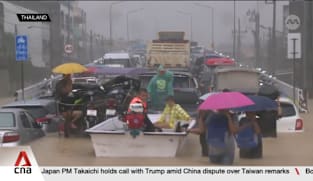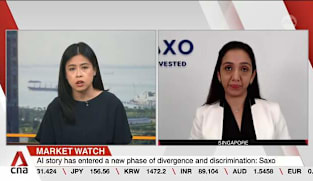Committee of Supply 2022 debate, Day 6: S Iswaran on resilient, sustainable and inclusive transport hub
Singapore will move decisively to reopen its borders and help the aviation industry recover. It aims to restore Changi Airport’s passenger volumes to at least 50 per cent of pre-COVID levels this year. It will shift from Vaccinated Travel Lanes (VTLs) to vaccinated quarantine-free travel. The aim is to allow all fully vaccinated travellers under the Ministry of Health's "Low Risk" and "General Travel" categories to enter Singapore without having to serve Stay-Home Notice. This will effectively reopen Singapore’s borders to the rest of the world, said Transport Minister S Iswaran. As the airport community and companies gear up for higher travel volumes, the Government will support them with a S$500 million “OneAviation Resilience Package”. The money will be used for manpower support, cost relief and measures to safeguard public health, and industry digitalisation and transformation efforts. Turning to the development of Terminal 5, he said the Government has used the opportunity to review its design and will provide an update in due course. Speaking in Parliament on Wednesday (Mar 9), Mr Iswaran outlined the priorities and plans of his ministry. On environmental sustainability, he said a blueprint will establish emissions reduction targets for 2030 and 2050 at the airport, with airlines and in air traffic management. A Maritime Singapore Decarbonisation Blueprint will aim to reduce emissions from the port terminals and harbour craft. The Maritime and Port Authority will commit an additional S$300 million over the next 10 years to reduce emissions and support green technologies and fuels for shipping. To maintain high-quality transport services, the Jurong Region Line will open in 2027 and the Cross Island Line (CRL) in 2030. The second stage of CRL will extend further west and run through areas such as Turf City, Sunset Way, Clementi, West Coast and Jurong Lake District. Mr Iswaran stressed that a resilient, sustainable and inclusive transport network is essential for Singapore’s survival. He said the job now is to steward Singapore’s world-class transport ecosystem, adapt it to the evolving circumstances and emerging trends, and pass on a more resilient, sustainable and inclusive transport hub to future generations.
Singapore will move decisively to reopen its borders and help the aviation industry recover. It aims to restore Changi Airport’s passenger volumes to at least 50 per cent of pre-COVID levels this year. It will shift from Vaccinated Travel Lanes (VTLs) to vaccinated quarantine-free travel. The aim is to allow all fully vaccinated travellers under the Ministry of Health's "Low Risk" and "General Travel" categories to enter Singapore without having to serve Stay-Home Notice. This will effectively reopen Singapore’s borders to the rest of the world, said Transport Minister S Iswaran. As the airport community and companies gear up for higher travel volumes, the Government will support them with a S$500 million “OneAviation Resilience Package”. The money will be used for manpower support, cost relief and measures to safeguard public health, and industry digitalisation and transformation efforts. Turning to the development of Terminal 5, he said the Government has used the opportunity to review its design and will provide an update in due course. Speaking in Parliament on Wednesday (Mar 9), Mr Iswaran outlined the priorities and plans of his ministry. On environmental sustainability, he said a blueprint will establish emissions reduction targets for 2030 and 2050 at the airport, with airlines and in air traffic management. A Maritime Singapore Decarbonisation Blueprint will aim to reduce emissions from the port terminals and harbour craft. The Maritime and Port Authority will commit an additional S$300 million over the next 10 years to reduce emissions and support green technologies and fuels for shipping. To maintain high-quality transport services, the Jurong Region Line will open in 2027 and the Cross Island Line (CRL) in 2030. The second stage of CRL will extend further west and run through areas such as Turf City, Sunset Way, Clementi, West Coast and Jurong Lake District. Mr Iswaran stressed that a resilient, sustainable and inclusive transport network is essential for Singapore’s survival. He said the job now is to steward Singapore’s world-class transport ecosystem, adapt it to the evolving circumstances and emerging trends, and pass on a more resilient, sustainable and inclusive transport hub to future generations.



















